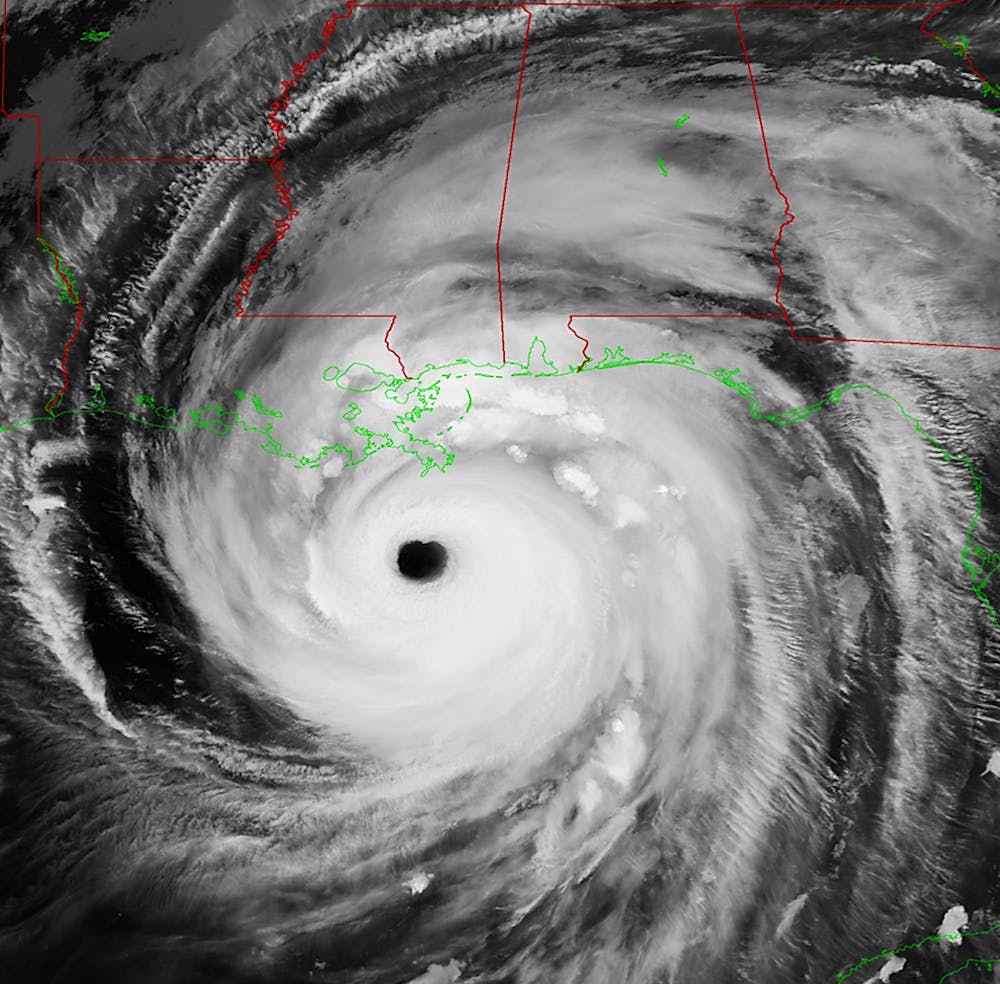MUNCIE, Ind. — As the 20th anniversary of the landfall of Hurricane Katrina approaches, many people remember the storm’s impact all too well. As the fourth-deadliest hurricane in United States history, according to the National Hurricane Center, made its way toward the Louisiana coastline, residents from coast-to-coast were terrified for their loved ones.
Dr. Petra Zimmermann, Director of the School of Earth, Atmosphere, and Sustainability at Ball State University, recounted the feelings of fellow faculty members at the time
“I had friends and colleagues who did have connections there. They were worried and there really wasn’t a lot of information. You have to remember that this was 2005, so social media was not a thing yet,” Zimmermann said.
After initially making landfall between Hallandale Beach and Aventura, Florida on August 25, Katrina weakened into a tropical storm before rapidly intensifying to a Category 5 hurricane over the Gulf of Mexico with sustained winds of 175 mph. The hurricane made landfall again near Buras-Triumph, Louisiana on August 29 as a strong Category 3 storm with sustained winds of 125 mph. The hurricane brought heavy rainfall to Louisiana, with amounts reaching as high as 15 inches. The storm surge resulted in a massive levee failure in New Orleans with 53 breaches in the system resulting in 80% of the city being flooded.
Photo courtesy of National Environmental Satellite, Data, and Information Service
“It was shocking to me that we could have such loss of life from a storm,” said Dr. Dave Call, Professor of Geography and Meteorology at Ball State University. “We had not had a storm that caused such loss of life in about 80 years. It was astounding to me that in 2005 we could get a storm that would cause that great loss of life.”
According to the National Weather Service, Hurricane Katrina was responsible for 1,833 fatalities and over $108 billion in damage (Unadjusted 2005 dollars). Most major roads traveling in and out of New Orleans were damaged and many high-rise buildings had extensive window damage.
“Phone lines were down. There were rampant indications of information but we had no way of confirming it. There was talk of horrific conditions in the Superdome, but we couldn’t confirm anything because we still had a 24-hour news cycle at the time but we didn’t have the immediacy of social media, and hurricanes knock things down. They knock out communication lines, so you didn’t have that immediacy of someone posting on Facebook or Instagram,” Zimmermann said.
Hurricane Katrina is tied for the costliest cyclone on record, with Hurricane Harvey in 2017 matching it. According to a modeling exercise conducted by the U.S. Army Corps of Engineers, two-thirds of the deaths in Greater New Orleans were due to levee and flood wall failure. New Orleans constructed new levees in the aftermath of the catastrophic storm surge. These levees proved to be successful when Hurricane Ida in 2021 forced large amounts of water toward the city, preventing another significant flooding event.
Photo courtesy of NOAA, Office for Coastal Management, DigitalCoast
The name Katrina was retired from the Atlantic hurricane name list in April 2006 because of the high death toll and widespread destruction. With updated technology, the public can stay better informed about future storm information and remain weather aware with hazardous weather events. Despite better forecasting, it’s important for people to listen to watches and warnings issued by weather forecasters.
“Perfect forecasts and incredibly strongly worded warnings don’t do any good if people aren’t able to or cannot take action for whatever reason,” Call said
To learn more about Hurricane Katrina, visit the National Weather Service website for more information.
Contact Joe Sawicki with comments at joseph.sawicki@bsu.edu.






